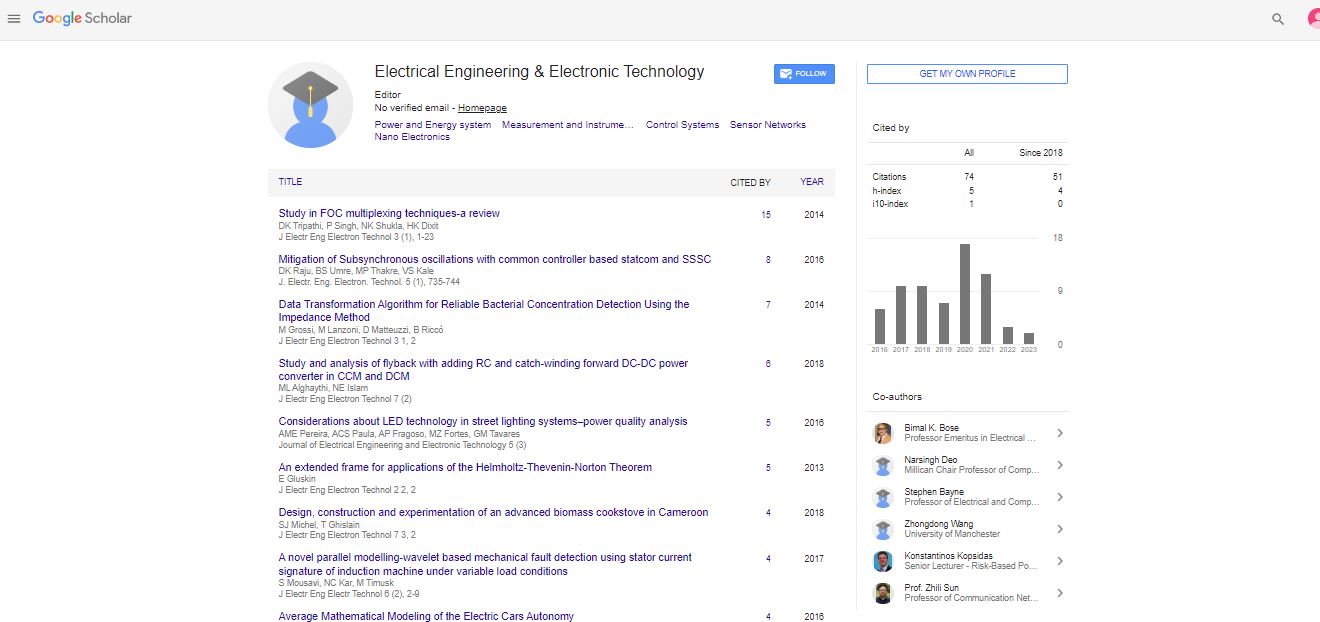Metallic nanoparticles biosensors: A colorful platform for detecting biomolecular interactions
Yen Nee Tan
Institute of Materials Research and Engineering, Singapore
: J Electr Eng Electron Technol
Abstract
Nobel metal nanoparticles (NPs) such as gold and silver, in the same size domain (<100 nm) as the biomolecules, are well suited for biosensing applications due to their unique optical properties arising from the localized surface plasmon resonance. We have developed three nanoplasmonic sensing to interrogate estrogen receptor (ER)-DNA interactions- an important transcriptional activity related to breast cancer biology. These assays exploit the interparticle distance-dependent plasmonic coupling and/or plasmon-induced fluorescent quenching as sensing elements. The first assay uses the citrate-anions capped AuNPs to probe the sequence-specific binding interactions of ER to various DNA sequences and to determine their binding stoichiometry without using labels, tedious sample preparation, and sophisticated instrumentation. This assay was further designed to couple with the aggregation-induced emission luminogen to allow dual optical signal (i.e., colorimetric and fluorescent) detection in a single experiment. The second assay was founded on the de-novo design of segmented ER-response DNA element onto two sets of metal NPs conjugates with complementary short sticky ends, where ER serves as a stabilizer to retard the particle aggregation induced by base-pairing and charge screening. This protein binding-stabilization strategy is generic and reduces the risk of getting false positive results. The third assay was designed based on the concept of traditional DNA footprinting using DNase with the combinatorial use of DNA-modified AuNPs to enable fast colorimetric detection without hazardous radioactive-labeling and tedious assessment of cleavage pattern. This versatile AuNPs-based enzymatic assay can be used to monitor nucleases activity, screen nucleases inhibitor, detect DNA-binding proteins and determine DNA sequence specificity in a fast, sensitive and convenient way.
 Spanish
Spanish  Chinese
Chinese  Russian
Russian  German
German  French
French  Japanese
Japanese  Portuguese
Portuguese  Hindi
Hindi 
